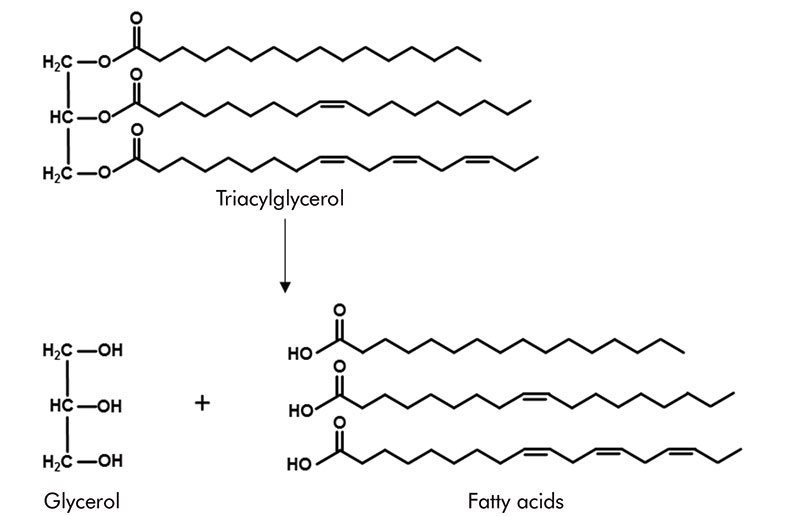Cosmetics Business asks: What is in lipolysis and how can it be induced
Over to the expert…

Lipolysis is defined as the breakdown of lipids and involves the cleavage of triacylglycerols (TAG), which generates fatty acids (FA) and glycerol (G) (figure 1).
This process is well-known in cosmetics and used in soap production. However, it also takes place in our body, for example during sustained physical activity.
Since the storage of soap within tissue would be very aggressive and unhealthy, the body has found a sophisticated mechanism to extract these high-energy substances in a controlled way.
Instead of using NaOH it uses enzymes to cleave the FA from TAGs.
The major site of fat storage is the subcutaneous adipose tissue, unfortunately often visible as undesirable cellulite. The adipose tissue consists of the fat-storing cells: so-called adipocytes.
Adipocytes are not only specialised for the storage but also for the mobilisation of TAGs.
This lipolysis process is strictly organised and regulated by the cellular energy level. The most important regulator of this process is an enzyme: adenosine monophosphate activated protein kinase.
When the energy level is low, this sensor activates various messengers and other regulating enzymes, which trigger the lipolysis mechanism.
Cleaved FA are finally transferred into the bloodstream, bound to proteins and safely transported to the places where they are needed. A proper microcirculation is essential for optimal performance.
Figure 1

Saponification of triacylglycerols
The subcutaneous adipose tissue becomes thinner and the skin becomes less uneven.
Cosmetic strategies in the fight against cellulite aim to stimulate and accelerate lipolysis. At the same time, increased microcirculation facilitates the removal of released FA.
Caffeine, a member of the group of methylated xanthines, is one of the best documented enhancers of lipolysis and one of the most widely used substances in this process.
Modern active ingredients, such as those found in Slimexir, combine various methylxanthines to achieve maximum synergistic effects on lipolysis and other natural substances (for example, those derived from artichoke extract) to improve microcirculation.
Slimexir prevents the formation of new adipocytes and reduces fat storage while also stimulating the decomposition of fat.
It triggers the fragmentation of lipid droplets (in vitro study) and in in vivo tests has been shown to reduce fat nodes and improve skin firmness.


